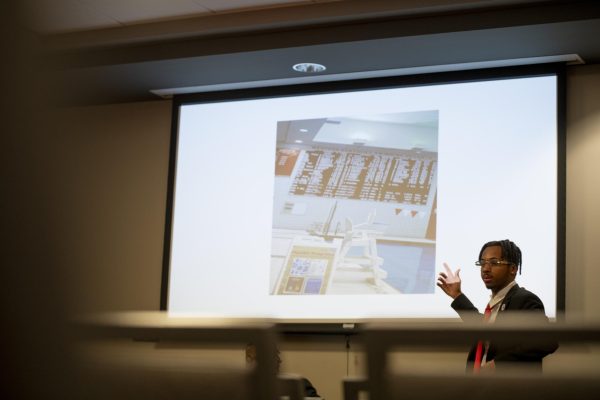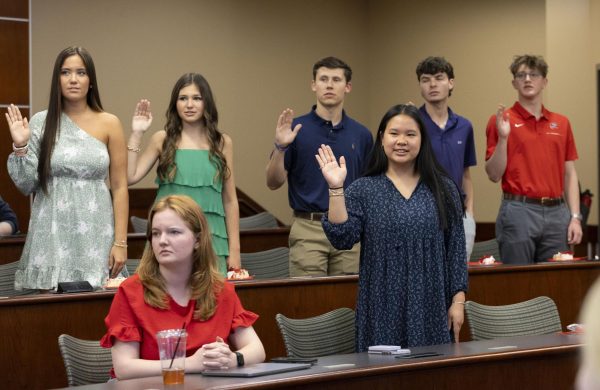Michigan State professor explains how online interactions play into perception of others
April 4, 2012
Most professors might not dedicate an hour-long lecture to things like YouTube comments, but Joseph Walther examined how these online interactions are proceed by other Internet users.
Walther, a professor of communication and telecommunications at Michigan State University, information studies and media, used his 45-minute lecture on Monday to discuss the conclusions his research revealed about various things that are on the periphery of online communication.
In one study, he set out to see what made Facebook profiles look more attractive to those who viewed their profiles.
According to his study, a female is most attractive when she has about 300 friends. The same study also showed that having attractive friends posting good things about the person also add to her appeal.
“That was pretty interesting to know someone’s social attractiveness just based on how many friends they have on Facebook and what they post,” said Chicago junior Michelle Passi.
Passi, who is a communication and Spanish double-major, said she hopes to do the kind of research that Walther is doing at some point in her career.
In addition to interactions on Facebook and in YouTube comments, Walther also touched on the subtle things that make someone’s testimony appear trustworthy on sites like Yahoo! and Amazon.
Walther said the appeal of social media is undeniable because the way information is presented is casual and helps keep people informed as to what the people around them are thinking.
“People enjoy seeing what their peers are saying and doing,” he said. “The things our friends are saying and doing is often more captivating to us than the formal information we’re supposed to be taking in.”
Walther said that while others in his field are beginning to look into how the information people post about themselves is really seen, no one is doing it quite like he is.
“A lot of people are using a variety of different approaches,” he said “I’m not sure so many are using this precise paradigm but, that’s okay because there’s a lot of different ways to crack this nut.”
The presentation of the research involved a lot of numbers and graphs but Angela Jones, associate professor of English, found that the way data was presented made it easy to grasp.
“In my field we don’t do a lot of quantitative research,” Jones said. “But the way he presented it made it accessible for me as a non-specialist.”
Jones said that until Walther pointed out how YouTube comments shape opinions of videos, she didn’t realize how much attention she paid to what others were saying.
“I’ve never written a YouTube comment in my life but I’ve read a gazillion comments because I’m always curious what people think about videos,” she said. “I’m sure they do affect my perception of the video itself.”
Jones went on to say that the information presented will make her more aware of how she processes the media she sees online.
Walther hoped that the audience came away with a sense that interactions online aren’t too different from the ones people have face to face.
“We have a good legacy of theory and research methods from traditional communication and if we look at new media in the right light we can… try to understand this world that looks like it might be new and unique,” Walther said.
























